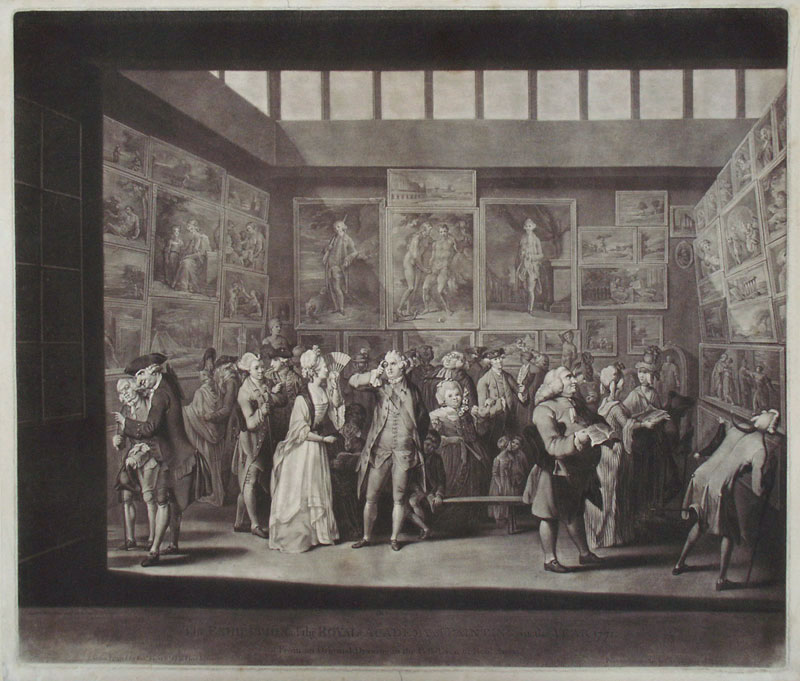


| Richard EARLOM after Charles Brandoin The INSIDE of the PANTHEON in OXFORD ROA [&] The EXHIBITION of the ROYAL ACADEMY of PAINTING, in the YEAR 1771 28 x 24 inches A scarce pair of black and white mezzotint engravings, by Richard Earlom after the drawings of Charles Brandoin. These are fine, early impressions, published by Robert Sayer in London in 1772. The plates celebrate the opening of two of London's most famous C18th cultural venues. The Royal Academy was founded in 1768 with Sir Joshua Reynolds as its first president. Its first exhibition was held in Pall Mall but it soon relocated to better equipped galleries within Somerset House, not moving to its present location in Burlington House until 1868. The Pantheon on Oxford Street was designed by James Wyatt as a "Winter Ranelagh" with a huge rotunda based upon Santa Sophia in Constantinople. It was opened in 1772, the year of this engraving, and rapidly became one of the most fashionable venues of the day. Charles Burney expressed what was universally felt at the time: "The Pantheon is regarded both by natives and foreigners as the most elegant structure in Europe, if not on the globe......No person of taste in architecture or music, who remembers the Pantheon, its exhibitions, its numerous, splendid and elegant assemblies, can hear it mentioned without a sigh." It was nearly destroyed by fire in 1792 and although rebuilt it never regained its former popularity. Eventually it was demolished in 1937 and replaced by Marks and Spencer! Richard Earlom was born in London in 1743, the son of the parish clerk of St. Sepulchre. He became a pupil of Cipriani but soon devoted his time to mezzotint engraving, at which he excelled. From 1765 onwards he worked for the publisher, John Boydell and it was during this period that he produced many of his best prints including the plates for the Houghton Gallery. He died in Clerkenwell in 1822. SOLD |

